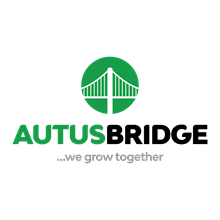Technical Report Writing
Details
Reading a well written report is pleasurable: the style is accurate, fluent and concise, with headings to indicate the content of each section. The diagrams, to comminicate non-verbal materials such as tables and graphs, are well presented and clearly labelled. There are no absolute rules about the details of report production, because every report must be totally adapted to the needs of its reader. The step-by-step approach applying in teaches participants technical report writing skills will exposes participants to the technicality of communicating effectively and efficiently.
Outline
Goals
Types of report (Formal Report, Technical Memo, Technical Proposals, Equipment or Maintenance Manuals, Journal Articles)
Category of reader (skilled, decision-maker, technical, operator, general non-specialists)
Compiling the report
Establishing a framework
Terms of reference (subject matter, purpose, reader
Report structure
Findings
Observations
Discussions
Conclusion
Recommendations
Executive summary
Other sections (title page, table of contents, lists, appendices, references)
Elements of Technical Writing
Factual versus opinion
Logical flow of writing
Results of research
Case Study: Developing awareness of fact and opinion and substantiating opinions with facts
Practical Session: Determining terms of reference and writing an introduction
Development process
Research (interviewing, listening, note taking, reading) Organizing the report
Development methods (general to specific, specific to general, chronological, sequential, cause and effect, comparison, spatial) Overview of conclusion/ recommendations section
Practical Session: Applying the four-stage reading process, group discussion on conclusion and recommendations
Report outline
Mind mapping
Outline formats (academic and engineering outline styles) Rough draft
Activate the writing (correct grammar, language, expressions and units of measures)
Simplify the writing (word/sentence/paragraph lengths, fog index)
Report appearance
White space
Headings/sub-headings
Illustrations
Practical Session: Interpreting graphic material, graphic presentation
Checking the specification
Functional language correctness Prototypes
Realistic specifications
Compliance test and evaluation criteria
Types of specifications
Industry standards
Specifications for complex goods and services Performance specifications
Design specifications
Writing the specification
Time and cost framework Collaboration with other purchasers Using consultants and specialists Specific and non-specific requirements Reviewing specifications
Petronomics | Learning and Development Services has continually invested in building energy industry workforce competency development across all energy value chain. This is combination with the rich and practical experience of delivering learning and development benefits to over 80 clients across Nigeria, Ghana, UAE, Gambia and Kenya scattered around 12 cities with different racial backgrounds in almost two decades. This achievement provides us the impetus to design a proficiency and experiential based competency development roadmap for deepening knowledge dissemination and bridging competency gaps for clients.





